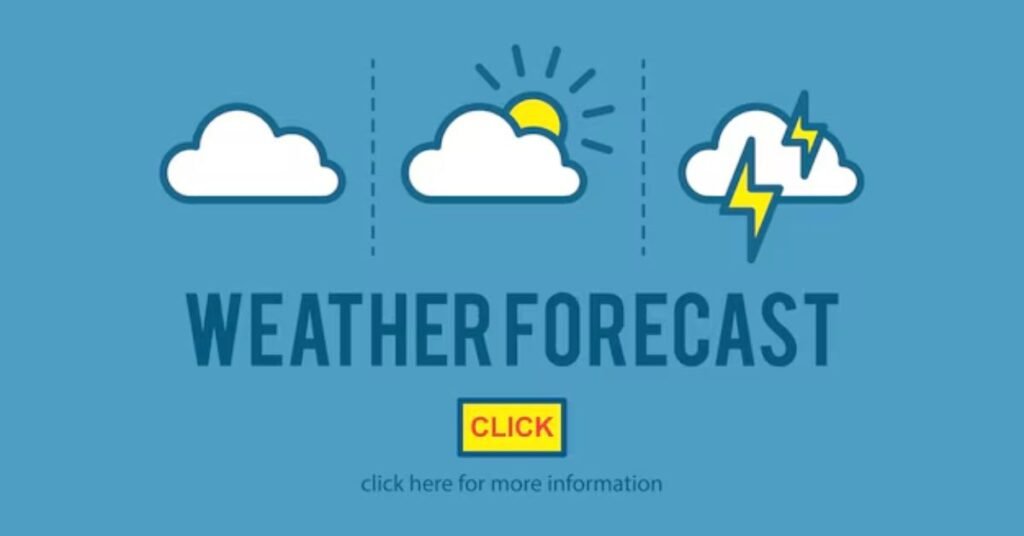Weather.gov is a valuable online resource for obtaining reliable, real-time weather information across the United States. It is managed by the National Weather Service (NWS), which ensures accurate and up-to-date data. This platform serves various purposes, from helping individuals plan daily activities to assisting emergency management professionals during severe weather conditions. In this article, we will explore how to make the most of Weather.gov, understanding its key features, and utilizing it effectively.
What Is Weather.gov?
Weather.gov is a government-operated website that offers weather forecasts, warnings, and advisories across the country. It provides real-time information such as local temperatures, wind speeds, humidity levels, and precipitation data. Beyond just weather updates, the site also supplies specialized services for aviation, marine forecasts, and fire weather. The wide range of information available on Weather.gov makes it a crucial tool for anyone needing accurate weather details.
Why Use Weather.gov for Your Forecast Needs?
Unlike many commercial weather platforms, Weather.gov is free and provides government-verified data. The National Weather Service, the body behind the site, employs meteorologists who use advanced technology to produce precise forecasts. This level of expertise ensures the most accurate predictions, which is critical when planning for severe weather. Weather.gov covers every location in the U.S., providing forecasts for both large cities and remote regions.
How Weather.gov Helps in Severe Weather Events
During severe weather events like hurricanes, tornadoes, and floods, Weather.gov becomes an essential tool. The site provides live updates, including warnings and watches that help people stay safe. You can receive alerts directly to your phone or email. The Storm Prediction Center (SPC) on Weather.gov focuses on severe weather threats, issuing detailed forecasts and hazard maps. Whether you’re dealing with thunderstorms or winter storms, Weather.gov offers reliable information to prepare and protect yourself.
Navigating the Weather.gov Interface
Navigating Weather.gov is straightforward, thanks to its user-friendly interface. The homepage immediately presents users with a search bar where they can enter their location to get specific forecasts. Users will also find a map of the United States, color-coded based on various weather conditions and warnings. Below the map, important updates are listed, including the latest advisory warnings and ongoing severe weather events.
How to Check Local Weather Forecasts on Weather.gov
To check local weather, enter your city or ZIP code in the search bar located on the homepage. The website will display current conditions, a short-term hourly forecast, and a detailed seven-day forecast. It provides essential information such as temperature, humidity, wind speed, and the probability of precipitation. Local forecasts can also be customized by using map-based tools, which allow users to zoom in on specific neighborhoods or areas.
The National Weather Service Radar on Weather.gov
One of the key features of Weather.gov is its radar section. The radar provides real-time data showing precipitation in your area, including rain, snow, sleet, or hail. This information helps users track approaching storms and predict when they might hit their area. The radar imagery is updated frequently, making it one of the most reliable tools for tracking weather systems. Users can toggle between various radar modes, such as base reflectivity and composite reflectivity.
Using Weather.gov for Marine Weather Information
If you are involved in activities on or near the water, Weather.gov offers extensive marine weather information. The site provides forecasts for coastal waters, including wave height, wind speeds, and tides. Sailors, fishermen, and coastal residents can benefit from this detailed information. Weather.gov also issues advisories for marine hazards like rip currents and high surf, ensuring safety for all water-based activities.
Weather.gov’s Aviation Weather Services
For those in the aviation industry or frequent flyers, Weather.gov provides essential aviation weather information. The Aviation Weather Center (AWC) on the site offers real-time updates that pilots use to ensure safe flight operations. Forecasts include turbulence, icing conditions, and wind shear, among other critical details. Even non-pilots can check these forecasts when planning flights to determine potential delays or cancellations.
Fire Weather Services on Weather.gov
In regions prone to wildfires, Weather.gov provides a dedicated section for fire weather forecasts. This service includes information on humidity levels, wind conditions, and other factors contributing to wildfire risks. Firefighters and emergency managers rely on this data to manage wildfires and plan evacuation routes. The fire weather section also helps the public stay informed about air quality issues related to wildfire smoke.
Weather Warnings and Alerts on Weather.gov
Weather.gov excels in providing timely warnings and alerts during dangerous weather events. Users can sign up for notifications, including text or email alerts, for extreme weather like tornadoes, hurricanes, or flash floods. The site uses color-coded systems to make it easy to understand the level of danger in your area. For example, a red zone may indicate an imminent weather threat, while a yellow zone suggests caution.
Hourly Forecasts on Weathergov
The hourly forecast feature on Weathergov is especially useful for planning day-to-day activities. Users can see detailed predictions for every hour, including temperature, wind speeds, and precipitation chances. This level of detail helps in planning short-term activities such as commutes, outdoor events, or business trips. It ensures that you have all the information needed to avoid sudden weather changes.
Interactive Map Features on Weathergov
Another useful tool is the interactive map feature, which allows users to view current conditions across the U.S. The map provides a wide range of overlays, such as temperature, radar, and satellite data. You can customize your view based on the information you find most useful. For instance, during a hurricane, the map can show wind speeds, flood advisories, and storm surges.
Weathergov for Emergency Managers and Professionals
Weather.gov is invaluable not only for everyday users but also for professionals in emergency management. The site provides detailed forecasts, storm tracks, and hazard information that aid in planning disaster responses. Emergency managers can use tools like the Hazardous Weather Outlook to monitor potential threats and coordinate with agencies. The site also offers information on preparedness, including checklists and resources for handling extreme weather events.
Mobile Access to Weathergov
You can access Weather.gov on mobile devices, ensuring that important weather data is available at any time. The mobile-friendly version of the website retains all the features of the desktop version. This flexibility is especially helpful for travelers, commuters, and those who need to check weather updates while on the go. Bookmarking the site or setting it as your homepage allows you to access it even faster.
Customizing Alerts and Notifications on Weather.gov
Personalizing your experience on Weathergov can make it even more useful. You can subscribe to alerts specific to your area, ensuring that you are informed about any severe weather conditions. Users can choose the type of alerts they receive, such as warnings for thunderstorms, flash floods, or hurricanes. Additionally, you can set the time intervals for receiving these alerts, so they align with your schedule.
Staying Safe with Weathergov Resources
Weathergov offers a variety of resources to help individuals and communities stay safe during extreme weather. It provides preparedness tips for different weather events, including hurricanes, tornadoes, and blizzards. The site also offers guidelines on creating emergency kits and evacuation plans. These resources are designed to educate the public, ensuring that they can take the necessary steps to protect themselves and their families.
Conclusion
Weathergov is an indispensable tool for accessing reliable, real-time weather forecasts. From local weather updates to detailed aviation and marine forecasts, it serves a broad audience. Whether planning daily activities or preparing for severe weather, users can trust the data provided by the National Weather Service. With features like radar maps, fire weather updates, and customizable alerts, Weathergov offers everything needed to stay informed. Checking this site regularly will help you make well-informed decisions and stay safe, regardless of the weather.
FAQs
1. How often is Weathergov updated?
Weather.gov updates its information frequently, with some data, like radar imagery, refreshing every few minutes.
2. Can I receive weather alerts via email?
Yes, Weather.gov allows users to sign up for email alerts for severe weather warnings and advisories.
3. Does Weathergov provide international forecasts?
No, Weather.gov focuses on weather forecasts for the United States and its territories.
4. Is there a mobile app for Weathergov?
There is no dedicated app, but the mobile version of the website is fully optimized for smartphone use.
5. Can I track hurricanes on Weather.gov?
Yes, the site offers detailed hurricane tracking, including forecasted storm paths, wind speeds, and storm surge data.



